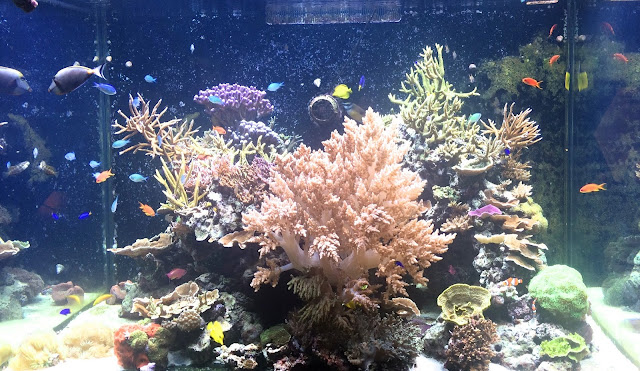 |
| The view whilst eating dinner in Sant'Ambrogio, Sicily, Italy |
Travelling to picturesque islands in the Mediterranean sea for some may simply mean absorbing the sun, sea and local atmosphere. However, my favourite of the holiday rituals is sampling the local cuisine. Sicily has many local products on offer from gelato, Aperol spritzes and limoncello to pasta and a delightful array of seafood.
In a little village on the hilltops of Northern Sicily, we were welcomed to the restaurant in Sant'Ambrogio by the most beautiful, breathtaking view overlooking the sea (see photo above). It was obvious from that point on that as we were right on the coast, the fish and seafood available were bound to be fresh and delicious.
 |
| Mussel spaghetti |
We went for three different seafood dishes; mussel spaghetti, 'la regina del mare' (meaning 'queen of the sea') with potatoes, and capone (gurnard) with potatoes. The Italians really do do seafood pasta well! The huge bowl of mussels with a splattering of spaghetti were incredibly flavoursome as well as being a seafood with a high level of sustainability. This is definitely a dish I will attempt to recreate at home.
 |
| "Queen of the Sea" with potatoes |
 |
| Capone (gurnard) with potatoes |
We could also all recreate both of the whole fish dishes, gurnard is widely available in the UK and is a fish with a high sustainability rating. 'Queen of the Sea' is in fact a fish called amber jack, which so far does not have a rating on the MCS good fish guide. Both of the fish tasted delicious and are definitely worth a try. Eating of any of these three seafood species would mean branching away from the 5 most eaten seafoods in the UK (cod, haddock, tuna, salmon and prawns) and could help alleviate the pressure on these species' fish stocks.























